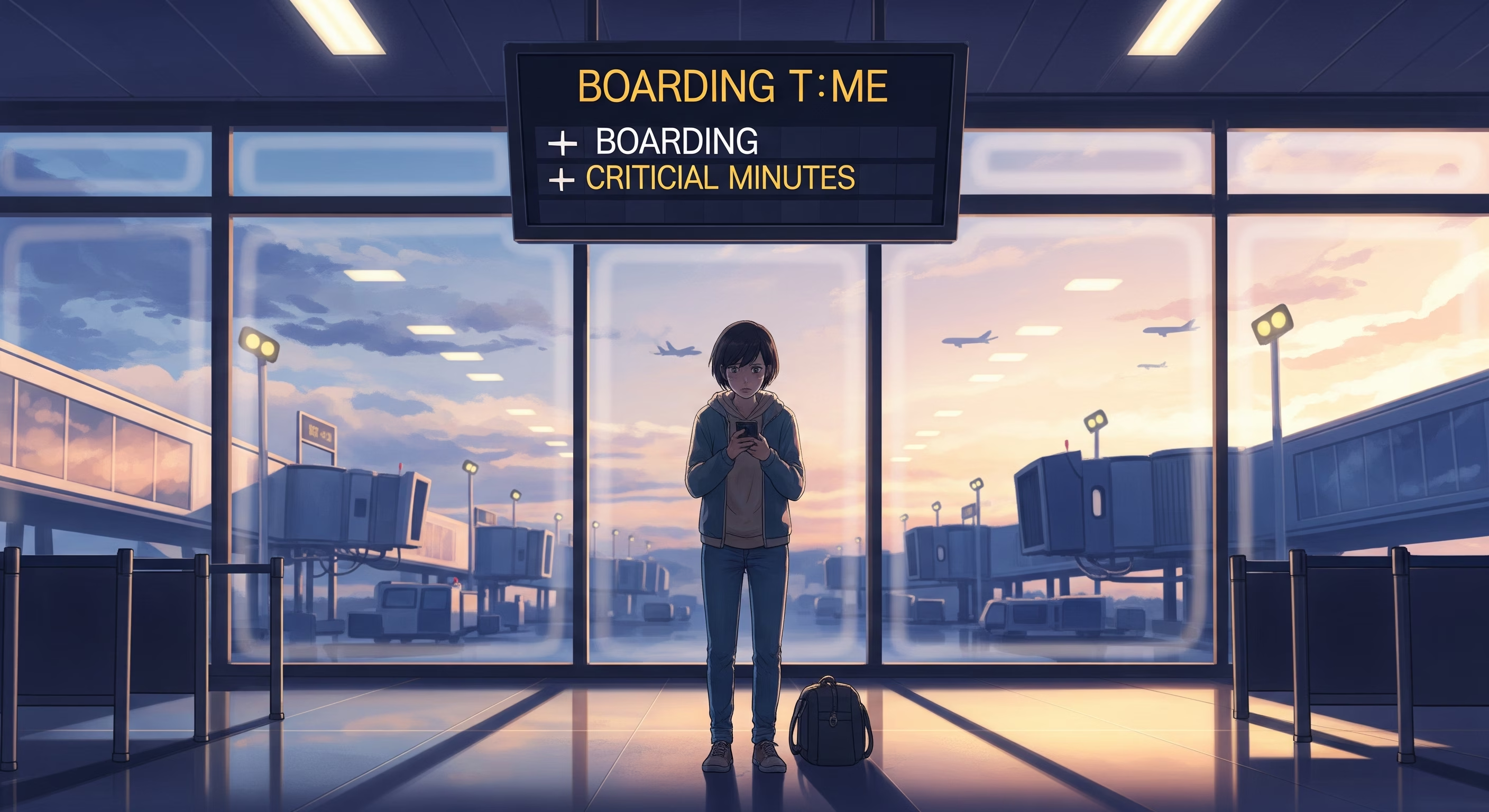INDEX
I still remember the look on the family’s faces at Istanbul Airport.
They were frantic, pleading with the airline staff.
Their first flight was delayed by just 90 minutes, but it caused them to miss their separate, self-booked flight to Asia.
The airline they had just flown with offered no help.
They were on their own, needing to buy four last-minute international tickets.
This is the harsh reality behind the tempting low prices online.
Understanding the real self transfer flight risks is the first step to protecting yourself from a travel catastrophe.
This guide is built from my own experiences and observations in over 50 countries.
I will show you what these “hacker fares” really mean, how to handle baggage and visas, and whether the savings are ever truly worth the gamble.
The Core Self Transfer Flight Risks Explained
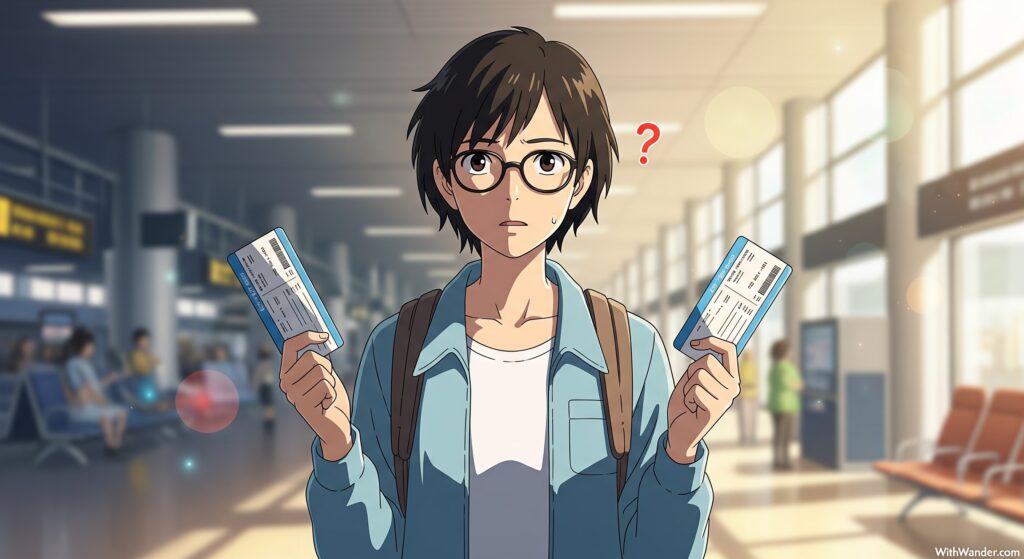
So, what exactly is a self-transfer?
It’s when you book two or more separate flights to get to your destination, creating your own layover.
Unlike a traditional booking on a single ticket, these airlines have no partnership. They don’t know or care about your connecting flight.
This means you are fully responsible for everything that happens in between.
⚠️The Golden Rule of Self-Transfers
If your first flight is delayed or canceled, the second airline considers you a “no-show.” They will cancel your ticket with no refund, and you will have to buy a new, expensive last-minute flight.
Source: Standard airline policy for separate tickets
What If I Miss My Self-Transfer Flight?

This is the most common and costly of all self transfer flight risks.
The answer is simple and brutal: you are entirely on your own.
I saw a backpacker learn this the hard way in Bangkok.
A 45-minute delay on his flight from Europe meant he missed his separate flight to Vietnam.
This kind of domino effect can ruin a fast-paced multi-country Europe trip before it even begins.
He had to pay over $400 for a new ticket and lost his first night’s accommodation booking.
Let’s compare this to a standard layover booked on one ticket.
Airline’s responsibility to get you to your final destination.
They will rebook you on the next available flight for free.
They may provide hotel and food vouchers for long delays.
Your checked bags are automatically transferred for you.
You are 100% responsible for any missed connections.
Your second ticket will be canceled with zero refund.
You must purchase a new, often very expensive, one-way ticket.
No compensation for hotels or food is provided.
The Baggage and Visa Nightmare
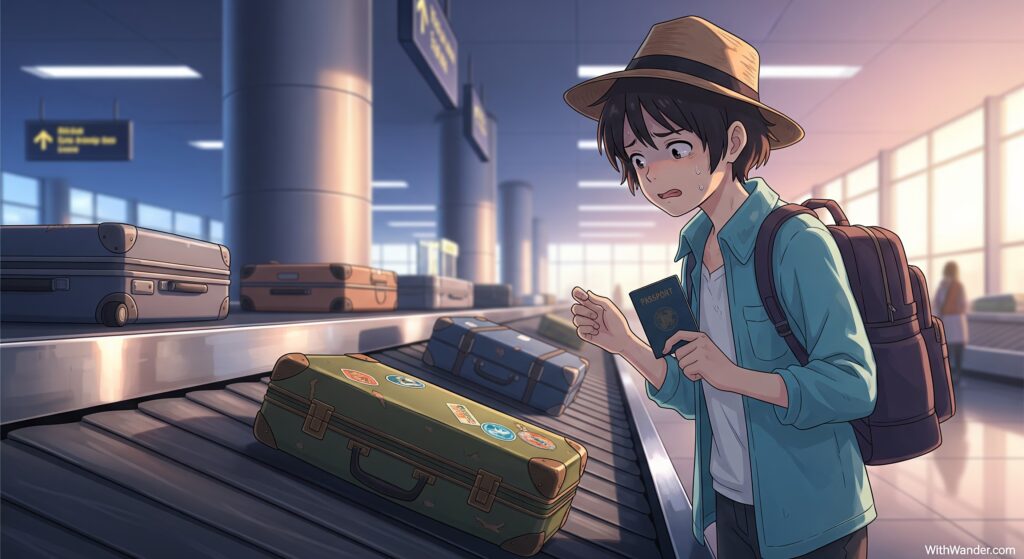
Many travelers don’t realize that a self-transfer means you aren’t just changing planes. You are officially arriving in a country and then departing again.
This creates two major hurdles: baggage and visas.
Do You Have to Recheck Bags on Kiwi?
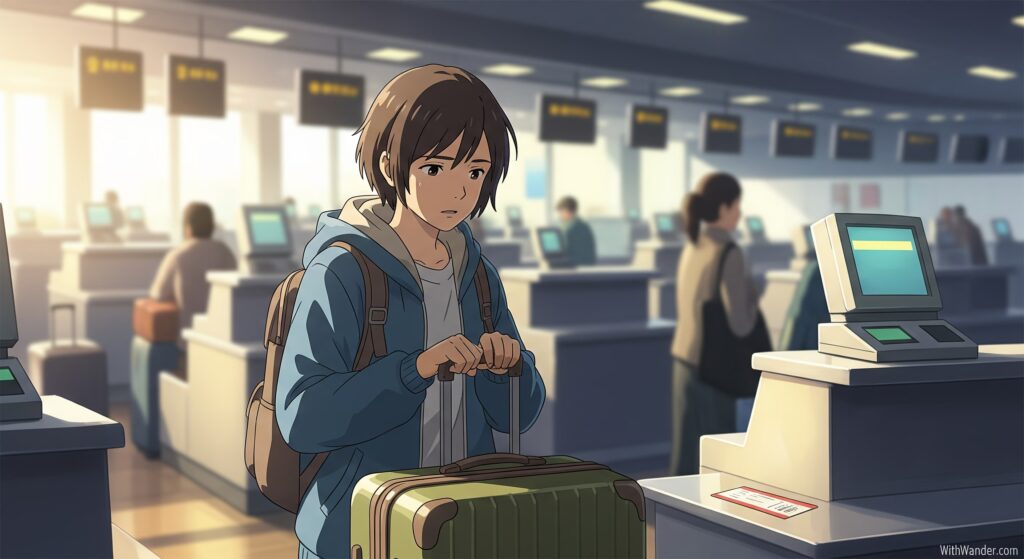
Yes, absolutely.
This applies to Kiwi.com and any other self-transfer booking.
Since the airlines aren’t partners, they will not transfer your luggage. You must complete a full arrival and departure process.
From personal experience, this can easily add 2-3 hours to your layover time.
It’s a stressful process, especially in a large, unfamiliar airport, and can leave you feeling as overwhelmed in Tokyo solo as I once did.
Your Mandatory Baggage Re-Check Process:
Follow the “Arrivals” signs, not “Flight Connections.”
You must present your passport and any required visa.
This is where long lines can ruin your tight connection.
You are officially entering the country of the layover.
Find your flight on the monitors to see which carousel has your bags.
Wait for your checked luggage to appear.
This can take anywhere from 20 minutes to over an hour.
If your bag is lost, you have a very serious problem.
Find the “Departures” hall, which could be in another terminal.
Locate your second airline’s check-in desk and queue up again.
Check your bags in and get your new boarding pass.
Be mindful of check-in desk closing times, usually 60 mins before flight.
Clear exit immigration (in some countries).
Go through the security screening process for a second time.
This is another point where queues can cause major delays.
Finally, you can head to your departure gate.
Do I Need a Visa for Dubai Layover?
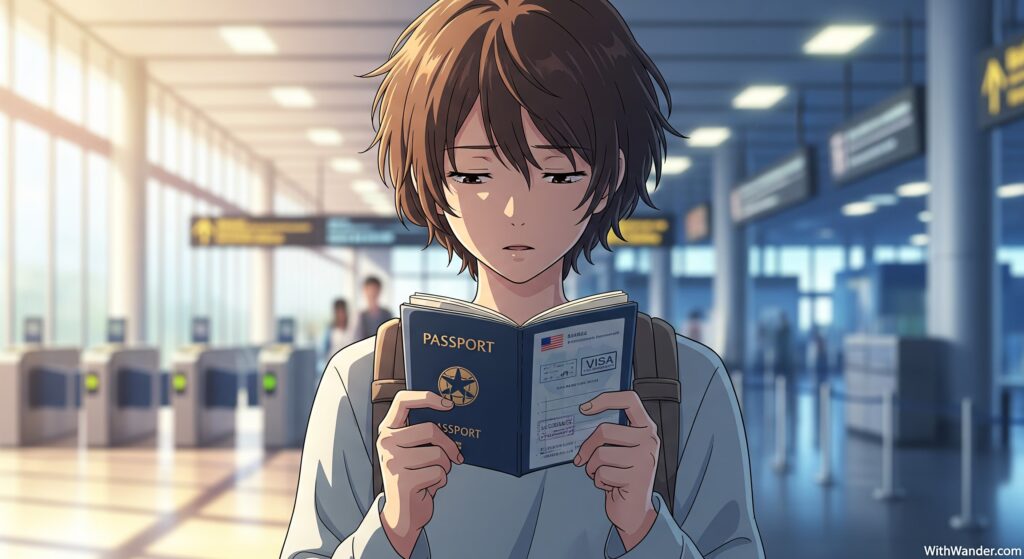
This is a critical question and a trap for many.
If you have a self-transfer flight through a place like Dubai (DXB), you are not a transit passenger. You must pass through immigration to collect your bags.
Therefore, you must meet the entry requirements for the UAE.
For many nationalities, this means you will need to secure a transit visa before your trip.
Failing to do so means you will be denied entry, and you will miss your connecting flight.
You are officially entering the layover country.
Research visa rules for your specific nationality and destination.
This applies to Dubai, the UK, the USA, and the Schengen Area.
Getting a visa at the airport is often not possible.
Some countries still have specific health declaration forms to enter.
You must have all required documents for *both* countries.
The first airline will check if you can enter the layover country.
If you don’t have the right papers, you won’t even be allowed to board.
Is Kiwi’s Self-Transfer Option Worth the Savings?

This is the final calculation every traveler needs to make.
You might see a flight that is $200 cheaper, but is the potential cost of failure worth that discount?
In my opinion, for most travelers, especially those who are less experienced or traveling with family, the answer is no.
The financial and mental stress of a missed connection far outweighs the initial savings.
One flight delay, one long immigration line, or one lost bag can cost you upwards of $500-$1000 in new flights, hotels, and food.
The initial $200 you saved is gone instantly.
💡My Personal Rule for Self-Transfers
I only consider a self-transfer if the layover is overnight (12+ hours) and I was already planning to visit the layover city. This gives me a massive buffer for delays and turns the layover into a mini-trip, not a risk.
My Tested Strategy for Reducing Self Transfer Flight Risks

If you are determined to book a self-transfer flight, you must treat it like a military operation.
Here are the steps I take to minimize the very real self transfer flight risks.
-
Book EXTREMELY Long Layovers
I never book a self-transfer with less than 5 hours between flights. For major international hubs like London Heathrow (LHR) or New York (JFK), I aim for 6-8 hours. This accounts for delays, long lines, and terminal changes.
-
Travel With Carry-On Only
This is the biggest risk-reducer. If you don’t have to wait for checked bags and re-check them, you can often use the faster “flight connections” path, saving hours. But you still need the correct visa!
-
Verify Visa Rules from Official Sources
Don’t trust a blog post. Go to the official embassy or consulate website for the layover country—the details matter, as I’ve shown with the complexities of the Mexico remote work visa. Check the rules for your specific passport. Get the required visa well in advance.
-
Book the First Flight of the Day
The first flights in the morning are the least likely to have cascading delays from earlier in the day. This gives you a better chance of departing on time.
Booking a self-transfer is a gamble.
Sometimes it pays off with a great deal, but when it goes wrong, it goes very wrong.
Be informed, be prepared, and always have a backup plan.
FAQs: Your Questions on Self Transfer Flight Risks

Is 2 hours enough for a self-transfer?
No. In my experience, 2 hours is almost never enough for an international self-transfer. When you factor in potential delays, taxiing, immigration, baggage claim, re-checking, and security again, you need a minimum of 4-5 hours to be safe.
Will the airline help if I miss my connection on separate tickets?
No. The airlines have no obligation to each other or to you. From the second airline’s perspective, you simply failed to show up for your flight. They will not rebook you or offer any assistance.
What is the difference between a layover and a self-transfer?
A layover is on a single ticket or booking reference. The airline is responsible for getting you and your bags to the final destination. A self-transfer involves two separate tickets, and you are 100% responsible for making the connection between them.
Does traveling with only a carry-on mean I can skip immigration during a self-transfer?
Not necessarily. While traveling carry-on only is a huge time-saver because you skip baggage claim, you may still need to exit the secure area and re-clear security. Crucially, you must always have the legal right to enter the layover country, including any required visas, as the first airline can deny boarding if you don’t have the proper documents.
Are self-transfers booked on sites like Kiwi.com protected?
While some booking sites offer their own limited guarantee, this is separate from the airlines. The airlines themselves offer zero protection. If your first flight is delayed, the second airline still considers you a no-show and will cancel your ticket without a refund. You are fully responsible for navigating the transfer process, including re-checking bags and clearing immigration.
What happens if my connecting flights are in different terminals?
This adds significant time and risk to your self-transfer. You must account for the time to deplane, go through immigration, collect bags, and then physically travel between terminals, which can involve a bus or train. This is a key reason why a 5+ hour layover is recommended, especially at large international airports.
What is a safe minimum layover time for a self-transfer?
Based on my experience, the absolute minimum for an international self-transfer is 4-5 hours. For major, busy hubs like London Heathrow (LHR) or New York (JFK), I would not risk anything less than 6-8 hours. The safest approach is an overnight layover of 12+ hours, which removes almost all stress from potential delays.
How much could a missed self-transfer flight really cost me?
The cost can be substantial and far exceed your initial savings. You will have to buy a new, last-minute, one-way ticket, which is often the most expensive type of fare. This can easily cost anywhere from $400 to over $1000 per person, plus the cost of any lost hotel bookings or activities at your destination.
